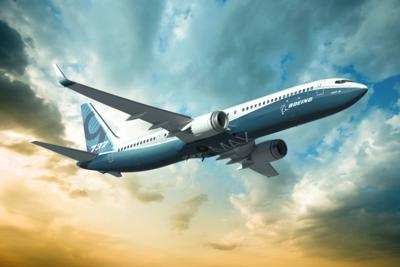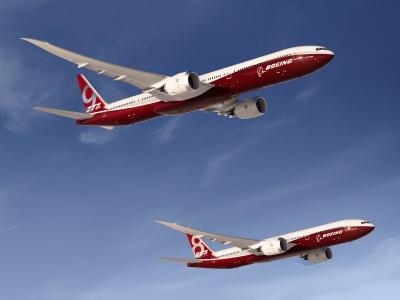Tue, Feb 11, 2014
Region Represents 36 Percent Of The World's New Airplane Deliveries
Strong economic and passenger growth will be main drivers of new airplane demand in the Asia Pacific region, according to estimates released just ahead of the Singapore Air Show by Boeing. The planemaker thinks the region's airlines will need an additional 12,820 airplanes valued at $1.9 trillion, representing 36 percent of the world's new airplane deliveries over the next 20 years.

"Asia Pacific economies and passenger traffic continue to exhibit strong growth," said Randy Tinseth, vice president, Marketing, Boeing Commercial Airplanes during a media briefing before the opening of the Singapore Airshow. "Over the next 20 years, nearly half of the world's air traffic growth will be driven by travel to, from or within the region. The Asia Pacific fleet will nearly triple, from 5,090 airplanes in 2012 to 14,750 airplanes in 2032, to support the increased demand."
Boeing's data projects that passenger airlines in the region will rely primarily on single-aisle airplanes such as the Next-Generation 737 and the 737 MAX, a new-engine variant of the market-leading 737, to connect passengers. Single-aisle airplanes will represent 69 percent of the new airplanes in the region.
"New low-cost carriers and demand for intra-Asia travel have fueled the substantial increase in single-aisle airplanes," said Tinseth. "Fuel-efficient airplanes like the Next-Generation 737 and 737 MAX help the growing number of low-cost carriers operate more efficiently and provide affordable fares to the emerging middle class."

For long-haul traffic, Boeing forecasts twin-aisle airplanes such as the 747-8 Intercontinental, 777 and the 787 Dreamliner will account for 28 percent of new airplane deliveries. Boeing's recently launched 787-10 and 777X also will support the demand for fuel-efficient twin-aisle airplanes in the region. Singapore Airlines already ordered 30 787-10s helping launch the program at the 2013 Paris Air Show and Cathay Pacific recently ordered 21 777-9X airplanes.
(Images from file)
More News
From 2023 (YouTube Edition): "Ain’t Your Daddy’s Super Cub”—Don Wade Co-owned by Don and Ron Wade—the former of Don’s Dream Machines, a storied >[...]
Pilot-Rated Passenger Reported That The Pilot Did Not Adequately “Round Out” The Landing Flare And The Airplane Bounced And Yawed To The Right Analysis: The pilot state>[...]
Dead Reckoning Dead reckoning, as applied to flying, is the navigation of an airplane solely by means of computations based on airspeed, course, heading, wind direction, and speed,>[...]
Aero Linx: Lake Amphibian Club This website is created and sponsored by the Lake Amphibian Club, to help spread the word about these wonderful, versatile amphibians that can land j>[...]
“I am deeply honored to be sworn in as NASA administrator. NASA’s mission is as imperative and urgent as ever — to push the boundaries of human exploration, ignit>[...]
 Classic Aero-TV: In Praise of Alabamas Patriot Aircraft USA
Classic Aero-TV: In Praise of Alabamas Patriot Aircraft USA NTSB Final Report: Cirrus Design Corp SR22
NTSB Final Report: Cirrus Design Corp SR22 ANN's Daily Aero-Term (12.21.25): Dead Reckoning
ANN's Daily Aero-Term (12.21.25): Dead Reckoning ANN's Daily Aero-Linx (12.21.25)
ANN's Daily Aero-Linx (12.21.25) Aero-News: Quote of the Day (12.21.25)
Aero-News: Quote of the Day (12.21.25)




